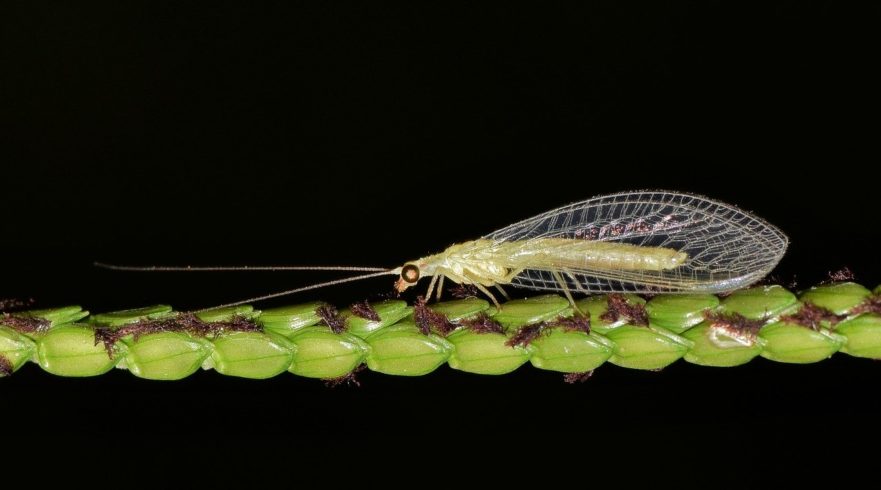Green lacewings are often an under-appreciated group of beneficial insects, and they are so valuable for pest management. Their contribution to insect control quite is immense! As soon as the green lacewing’s eggs hatch, the hungry larvae will eat aphids, mealybugs, scale, spider mites, thrips, whiteflies and other slow moving insects. So, I decided that our future gardeners should be introduced to Lacewings via “Ace Lacewing….Bug Detective”.
*********************

David Biedrzycki – Author and Illustrator
“Here’s the buzz on Ace Lacewing: he’s tall, handsome, and has two antennae. Queenie Bee and the Royal Jelly are missing, and Ace is hot on the honey trail. To save the day he’ll need help from his friends, Sergeant Zito, Slim the Walking Stick, and Xerces the butterfly, as they take on sinister Al the Drone.” Goodreads
***************
Listen to the story of Ace Lacewing
***********************
True Identity
Ace Lacewing, Bug Detective, is full of interesting characters from the insect world. Ace himself is a Green Lacewing, a winged bug that grows from a larva like a butterfly and is a great friend to gardeners because he eats pests.

Green lacewings are insect predators that measure ½ to ¾ of an inch long and have very delicate-looking wings… that’s why they are called Lacewings. These green insects have long antennae and gold or copper eyes.


Interesting Facts
They have ‘ears’ at the base of their front wings. When they hear bats making echolocation sounds, they close their wings and drop down to hide
They can escape a spider’s web! They are so light, the web barely vibrates to alert the spider. The lacewing can bite through the spider’s silk, if its legs and antennae are stuck.
When it is stuck in a spider’s web only by its wings, it holds completely still. Slowly, the lacewing slides downwards out of the web. Tiny hairs on the wings prevent the sticky spider silk from touching the wings’ surface.

Watch as the female lays her eggs….
*****************
Four Beneficial Insect Species That You May Find in Your Garden….
Beneficial insect predators are those species that perform valued pest control in our gardens. That’s right, good bugs can be used to battle bugs.

Ladybugs-There are over 6,000 species of Ladybugs. They help control mildew, aphids, and mealy worms.

Praying Mantis-Definitely the coolest looking hunter in the garden. They gobble all sorts of garden pests.

Dragonflies-Undoubtedly one of the most beautiful insects in our gardens. They help control aphids, flies, midges and mosquitoes.

Lacewings-They dine on aphids, mealybugs, scales, thrips, and whiteflies.
***************
BACKYARD INSECT HUNT
Click on the link below and print out your tally sheet, “Looking for Good Bugs in the Garden”
Looking for Good Bugs in the Garden

